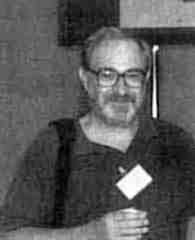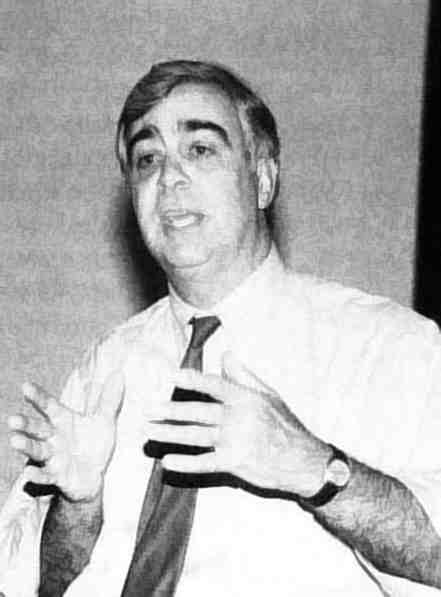


Meeting report
Structure-Based Drug Design
 H. Einspahr.
H. Einspahr.
The Structure-Based Drug Design Conference held in Panama City Beach, Florida, April 22-25, 1994, was organized by C. E. Bugg, L. J. DeLucas and J. P. Glusker and sponsored by the University of Alabama (UAB).
At the heart of the structure-based drug design method is a feedback loop in which studies of complexes between target proteins and drugs (enzyme-inhibitor, receptor-antagonist) guide chemical modifications toward higher efficacy. R. Salemme (3D Pharmaceuticals) reviewed methods and applications of structure-based design identifying potentials for progress, and to point out the areas that are still poorly understood. Two primary challenges he cited were finding rational approaches to identifying lead compounds and predicting the effect of synthetic modification of a drug on ligand shape and cooperative protein-ligand interactions. With regard to lead finding, Ray pointed to increased and more sophisticated use of combinatorial libraries and libraries of chemical diversity as offering hope for future improvements. With regard to consequences of chemical modifications, he cited continued improvements in computational methods and more accurate physical models that promise increased predictive value.
B. Honig (Columbia) described treatment of water as a continuum dielectric in protein modeling, progress in prediction of loop structures in proteins like E. coli RNase H, and calculation of predicted changes in free energy for mutations. J. Blaney (Chiron) described an evolutionary approach to de novo design in which molecules with better scores in a modified DOCK program are used iteratively in a genetic algorithm to generate new hybrid molecules by recombination or other methods with the imposition of additional scoring criteria.

 Devotees Pat Weber and Charlie Bugg take the hand jive from Philadelphia to Panama City Beach. (Photos WLD)
Devotees Pat Weber and Charlie Bugg take the hand jive from Philadelphia to Panama City Beach. (Photos WLD)
P. Fitzgerald (Merck), K. Appelt (Agouron), and J. Erickson (NCI-FCRDC) covered different aspects of the intensive focus on inhibition of HIV protease, with John examining the emerging question of resistance. W. Hol (Washington) described his studies of structures of key proteins in a variety of tropical diseases and his recent efforts to find lead inhibitors for cholera toxin, E. coli heat labile enterotoxin, and glyceraldehyde-3-phosphate dehydrogenases from trypanosomal and leishmanial organisms. P. Weber (DuPont Merck) described the design of ligands for streptavidin, which has in some ways become a testbed for structure-based design methods. Other presenters included J. Kuriyan (Rockefeller) on design of peptides that bind to SH2 domains, J. Hogle (Harvard) and V. Giranda (Sterling Winthrop) on uncoating inhibitors of polio and rhinovirus, respectively, M. Luo (UAB) on inhibition of the neuraminidase of flu virus, A. Tulinsky (Michigan State) on inhibition of thrombin, Babu (BioCryst) on inhibition of purine nucleoside phosphorylase, and M. Navia (Vertex) on modulators of the activity of the complex of IK506, its binding protein FKBP, and calcineurin.
A number of speakers, notably P. Fitzgerald, P. Weber, and Babu, pointed out that strong performance in enzyme inhibition or receptor antagonism was not the only property required of a drug, but that low toxicity, good bioavailability, slow clearance, and a variety of other properties could be crucial to therapeutic action. Several speakers, in particular C. Bugg and P. Weber, also noted that feedback loops similar to the structure-activity loop of structure-based drug design might be applied to refine other needed attributes of a drug. The final presentation of the conference by H. Einspahr (Bristol-Myers Squibb) advocated the incorporation of structure directly into optimization loops for pharmacokinetic properties. He illustrated his thesis with examples of potential structure-based design for targeted delivery, for countermeasures against metabolic mechanisms of resistance, and for endocytotic absorption.
Howard Einspahr

